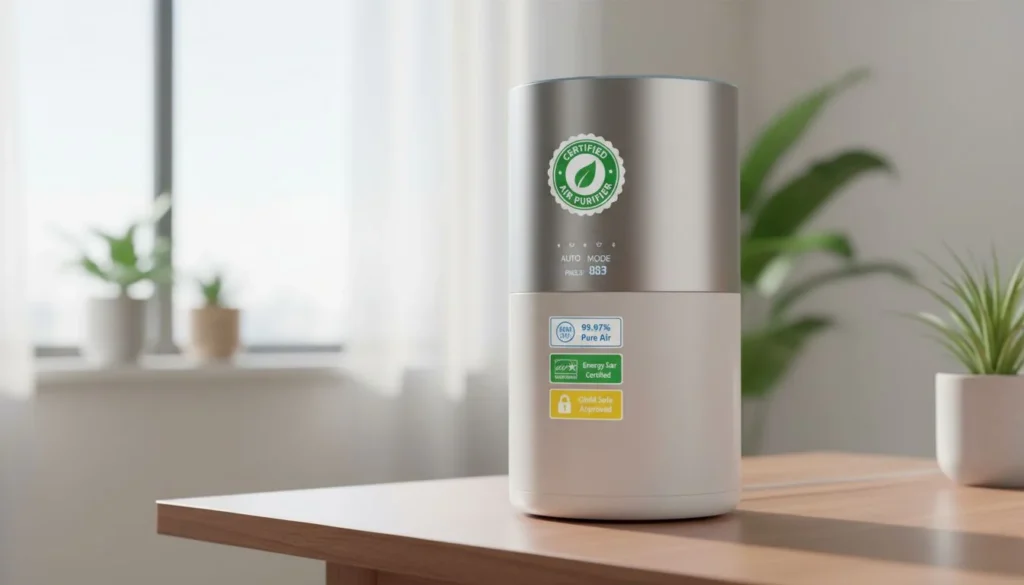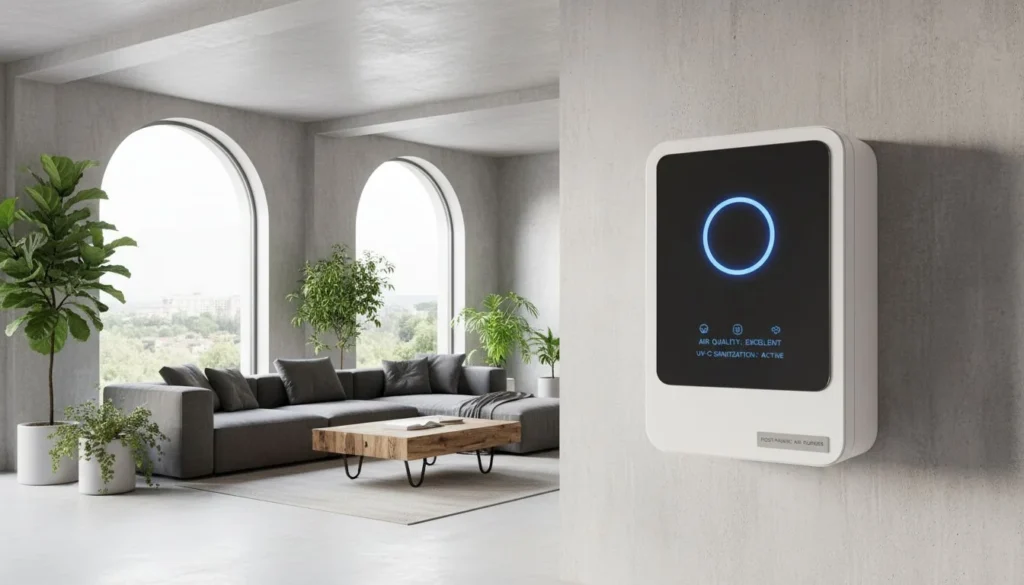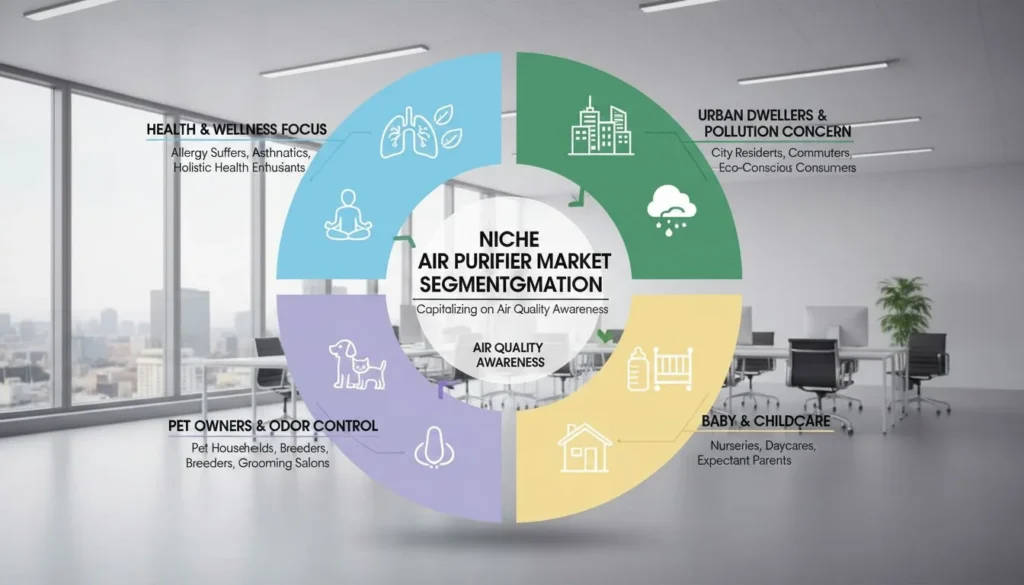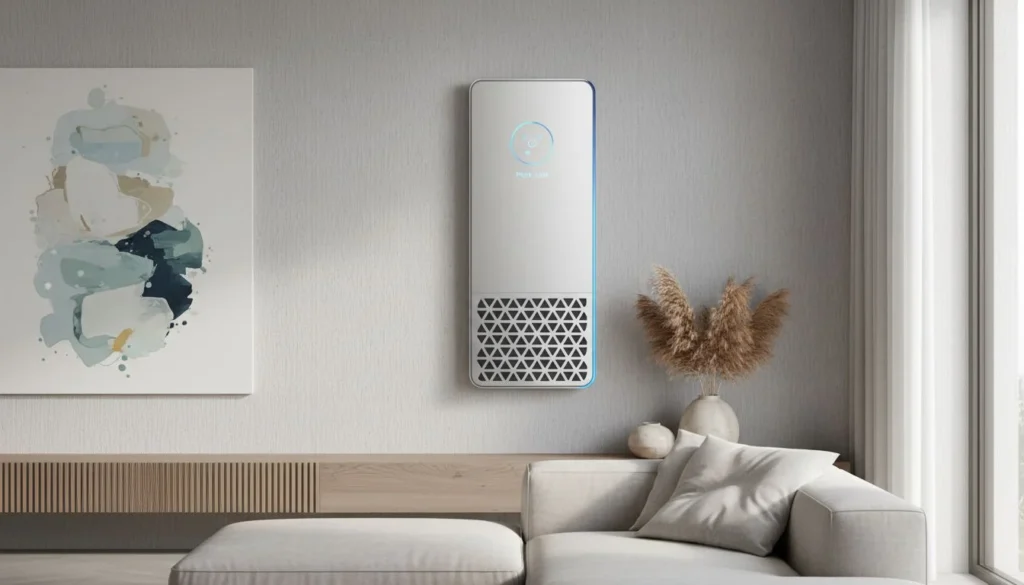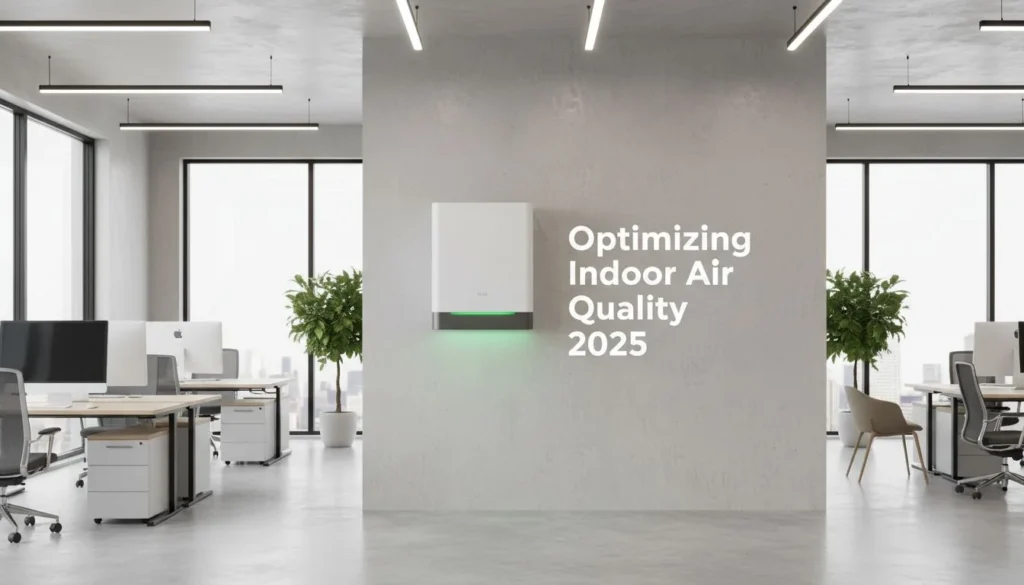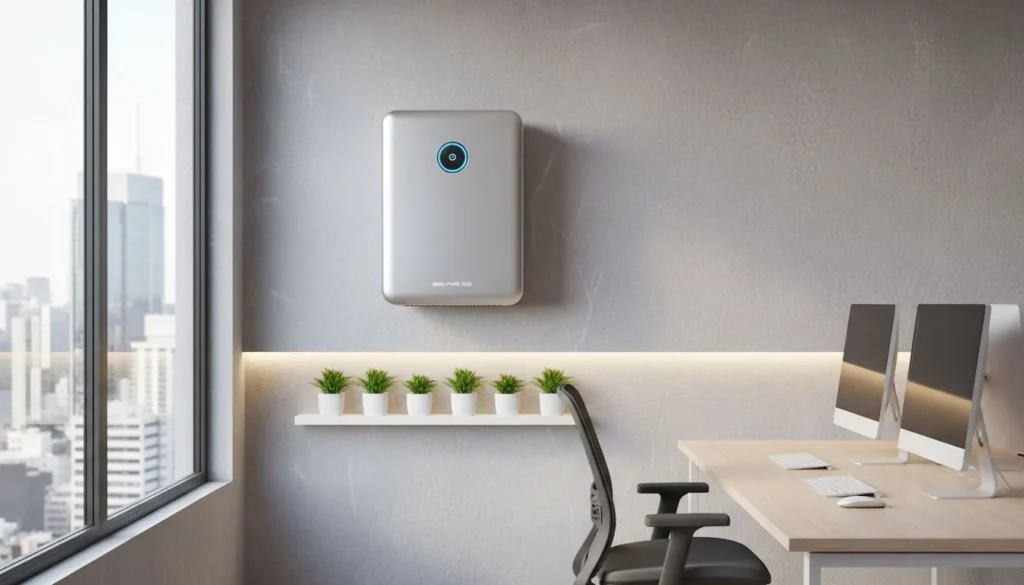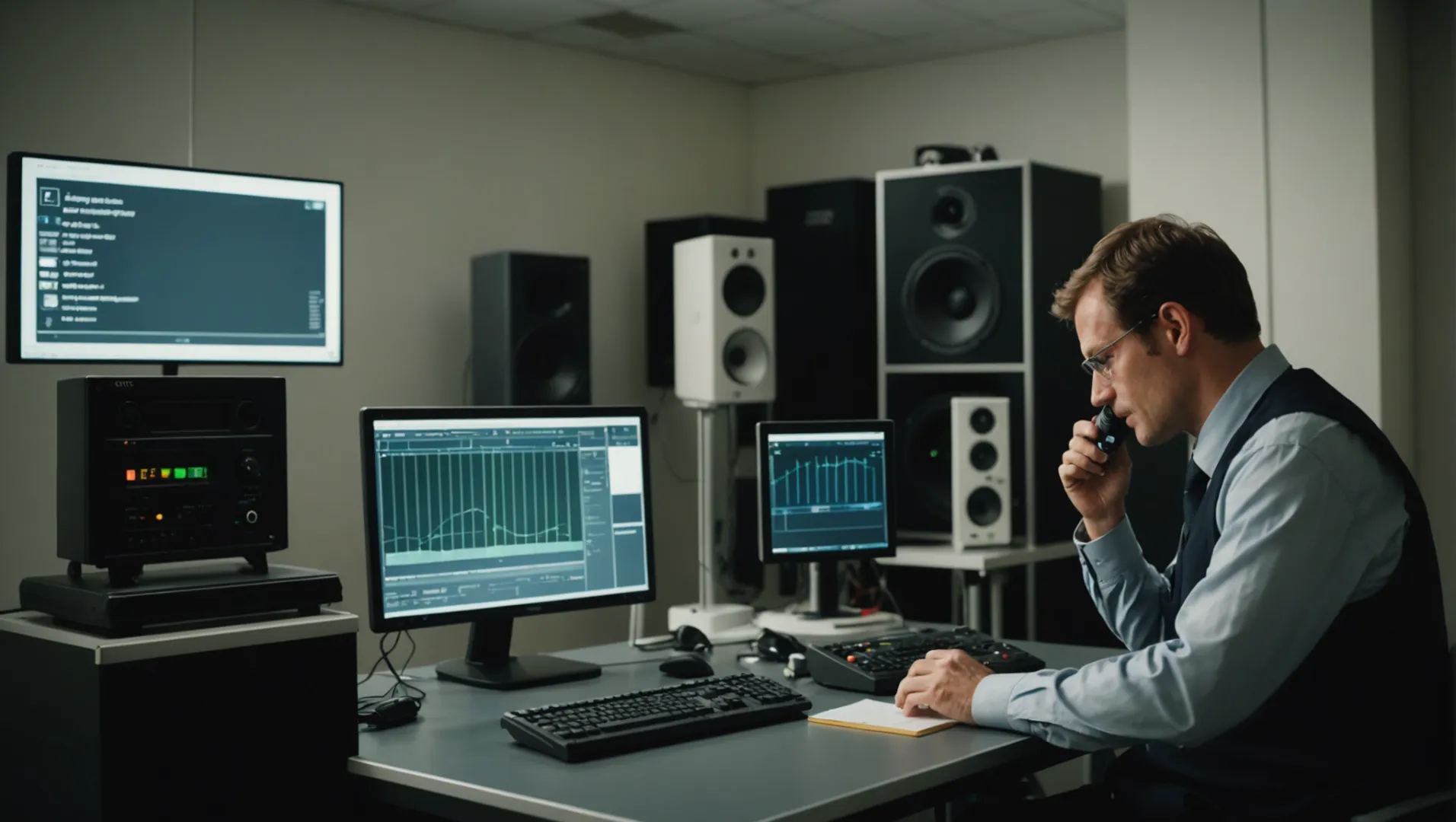
Vous en avez assez des appareils bruyants qui troublent votre tranquillité ? Testons ensemble les niveaux sonores des purificateurs d'air !
Pour tester efficacement les niveaux de bruit des purificateurs d'air, il convient d'utiliser une salle d'essai professionnelle afin d'éviter les interférences environnementales et de faire la distinction entre les mesures de la pression acoustique et de la puissance acoustique. Pour obtenir des résultats précis, les tests doivent correspondre aux performances du purificateur d'air.
Bien que cet extrait fournisse une compréhension de base, les subtilités des tests de bruit sont vastes. Plongez dans notre guide détaillé pour en savoir plus sur les environnements de test professionnels, les techniques de mesure et la manière d'équilibrer les performances et les niveaux de bruit pour un fonctionnement optimal du purificateur d'air.
La puissance sonore reste constante quel que soit l'environnement.Vrai
La puissance sonore mesure l'énergie totale émise, sans tenir compte de l'environnement.
Quels sont les outils et l'équipement nécessaires pour les tests de bruit ?
Avant d'entreprendre des tests de bruit pour les purificateurs d'air, il est essentiel de disposer des outils et de l'équipement adéquats.
Les outils essentiels pour les tests de bruit comprennent les sonomètres, les dosimètres de bruit, les calibrateurs et les chambres anéchoïques. Ces instruments permettent d'obtenir des mesures précises de la pression et de la puissance acoustiques, essentielles pour évaluer les performances des purificateurs d'air.
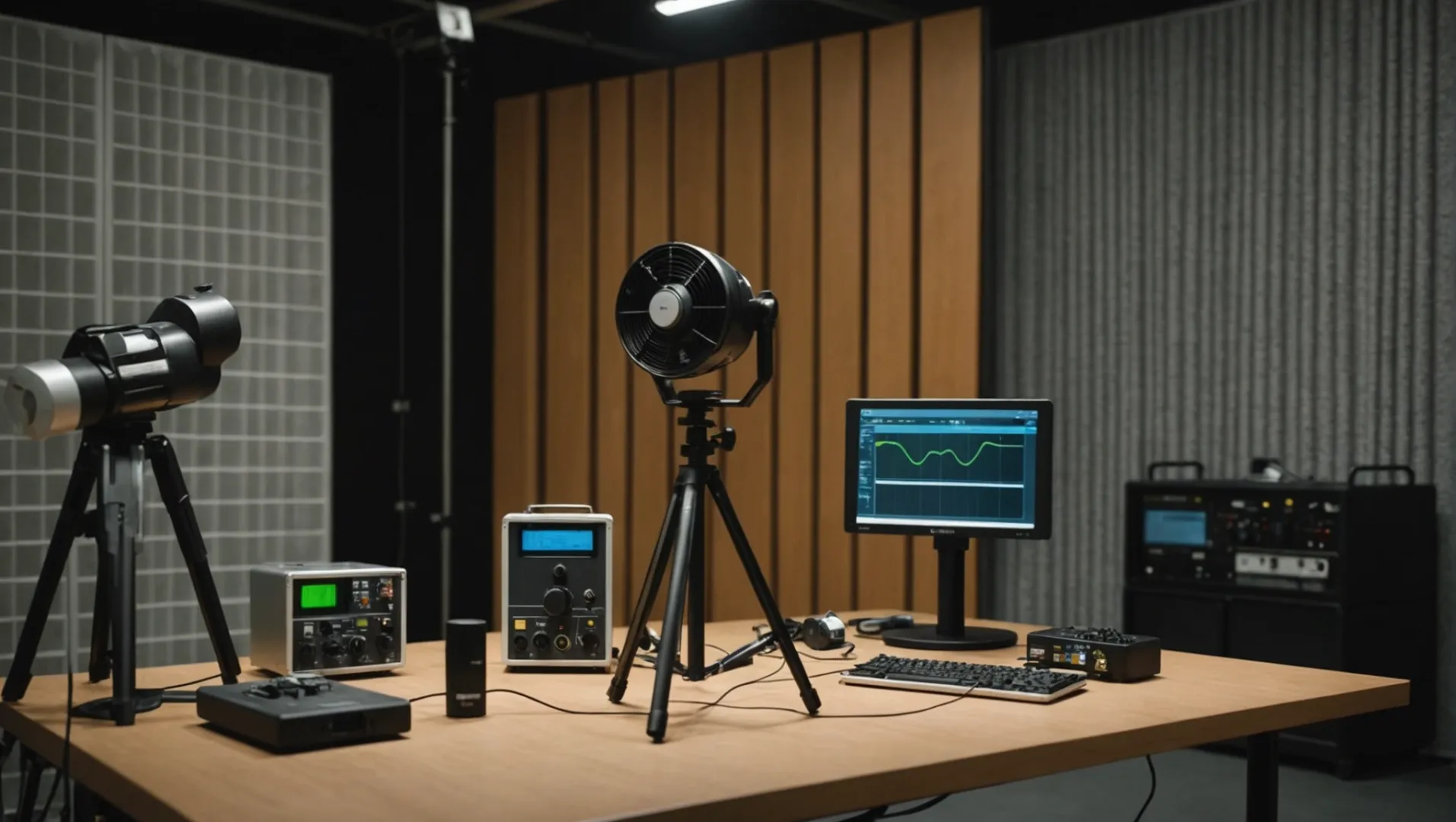
Comprendre les bases de la mesure du bruit
Afin de tester les niveaux de bruit1 Dans les purificateurs d'air, plusieurs outils spécialisés sont nécessaires. Voici un aperçu de l'équipement essentiel :
- Sonomètres: Ils sont utilisés pour mesurer l'intensité du son en décibels (dB). Ils sont essentiels pour comprendre le niveau de bruit immédiat produit par un purificateur d'air.
- Dosimètres de bruit: Similaires aux sonomètres, ces appareils sont utilisés sur des périodes plus longues pour évaluer l'exposition moyenne au bruit. Ils sont particulièrement utiles dans les environnements où les niveaux de bruit fluctuent.
- Calibrateurs: Pour garantir leur précision, les appareils de mesure du son doivent être étalonnés. Un calibrateur fournit une tonalité de référence, ce qui vous permet de régler votre sonomètre en conséquence.
- Chambres anéchoïques: Il s'agit de pièces spécialement conçues pour absorber les réflexions sonores. Elles fournissent un environnement contrôlé pour des tests plus précis en éliminant les interférences sonores externes.
Pression acoustique et puissance acoustique
Lors de la mesure du bruit, il est important de faire la distinction entre la pression acoustique et la puissance acoustique :
- Pression acoustique est ce que nous entendons et est mesuré à l'aide de sonomètres. Il s'agit de la variation de pression locale causée par les ondes sonores.
- Puissance sonoreEn revanche, l'énergie émise par une source par unité de temps est une mesure plus intrinsèque de la capacité d'une source à générer du son. Cette mesure est souvent utilisée dans les milieux industriels à des fins de précision.
En pratique, mesures de la puissance acoustique2 nécessitent des installations plus sophistiquées, telles que des chambres anéchoïques et des tests multipoints, pour déterminer le profil sonore complet d'un purificateur d'air.
Procédures d'essai standard
Les tests de bruit doivent respecter des procédures normalisées afin de garantir la cohérence et la comparabilité des résultats. Pour les purificateurs d'air :
- Test en neuf points: Il s'agit de prendre des mesures sous différents angles et à différentes distances autour du purificateur d'air, généralement à un mètre de distance. Cette méthode permet d'obtenir le profil complet des émissions sonores.
- Respect des normes: Utiliser les lignes directrices d'organismes tels que l'AHAM pour le marché américain, qui fournissent des protocoles spécifiques pour les essais.
La compréhension de ces outils et méthodes permet non seulement d'améliorer la précision de vos mesures, mais aussi de concevoir des purificateurs d'air plus silencieux et plus efficaces.
Les sonomètres mesurent l'intensité sonore en décibels.Vrai
Les sonomètres sont conçus pour mesurer l'intensité sonore en décibels (dB).
Les chambres anéchoïques amplifient les bruits extérieurs pour permettre des tests précis.Faux
Les chambres anéchoïques absorbent les réflexions sonores, éliminant ainsi les interférences sonores externes.
En quoi la pression acoustique et la puissance acoustique diffèrent-elles dans les mesures ?
Il est essentiel de comprendre la différence entre la pression acoustique et la puissance acoustique pour tester avec précision le niveau de bruit.
La pression acoustique mesure les variations locales de la pression atmosphérique provoquées par une onde sonore, tandis que la puissance acoustique quantifie l'énergie totale émise par une source. Les niveaux de pression acoustique peuvent fluctuer en fonction de la distance et de l'environnement, alors que la puissance acoustique reste constante, ce qui constitue une référence plus stable pour comparer différentes sources.

Pression sonore : l'expérience auditive
La pression acoustique est souvent ce à quoi nous nous référons lorsque nous discutons de l'intensité sonore d'une chose. Elle mesure les fluctuations de la pression atmosphérique en un point précis et s'exprime généralement en décibels (dB). La niveau de pression acoustique3 (SPL) est influencée par la distance de la source et les conditions environnementales, telles que les murs ou les objets susceptibles de réfléchir ou d'absorber le son. Cette variabilité en fait une mesure pratique pour les produits de consommation, car elle reflète les conditions d'écoute réelles.
Puissance sonore : la signature de la source
La puissance sonore, quant à elle, désigne la quantité totale d'énergie sonore émise par une source, mesurée en watts. Contrairement à la pression acoustique, la puissance acoustique reste constante quel que soit le milieu environnant ou la distance par rapport à la source. Cette constance en fait une mesure précieuse pour les applications industrielles où un contrôle précis des émissions sonores est crucial.
Implications pratiques des différences de mesure
Sur les marchés grand public, comme celui des purificateurs d'air, les mesures de la pression acoustique sont souvent utilisées en raison de leur importance pour l'expérience de l'utilisateur. Cependant, pour concevoir des purificateurs d'air très performants avec de faibles niveaux de bruit, il est nécessaire de comprendre le fonctionnement des purificateurs d'air. mesures de la puissance acoustique4 est essentielle. Par exemple, la réduction de la puissance sonore peut conduire à un appareil plus silencieux dans l'ensemble, même si les niveaux de pression acoustique varient en fonction de l'emplacement dans une pièce.
| Type de mesure | Unités | Influences | Applications |
|---|---|---|---|
| Pression acoustique | dB | Distance, environnement | Produits de consommation |
| Puissance sonore | Watts | Aucun | Conception industrielle |
Choisir la bonne mesure
Le choix entre la pression acoustique et la puissance acoustique dépend de l'objectif de l'application. Si l'objectif est de garantir aux utilisateurs un environnement silencieux, il est préférable de se concentrer sur la pression acoustique. les niveaux de pression acoustique5 est bénéfique. À l'inverse, pour les besoins de l'ingénierie où un rendement constant est nécessaire, la puissance acoustique constitue un point de référence plus fiable.
La puissance sonore est mesurée en décibels (dB).Faux
La puissance sonore est mesurée en watts et non en décibels.
Les niveaux de pression acoustique varient en fonction de la distance par rapport à la source.Vrai
La distance influe sur les niveaux de pression acoustique, ce qui modifie l'intensité du son.
Pourquoi est-il important de disposer d'une salle d'insonorisation professionnelle ?
Découvrez pourquoi une salle d'essai de bruit professionnelle est essentielle pour une évaluation précise des purificateurs d'air.
Une salle d'essai acoustique professionnelle minimise les interférences sonores de l'environnement, garantissant des mesures précises et fiables des niveaux de bruit des purificateurs d'air.
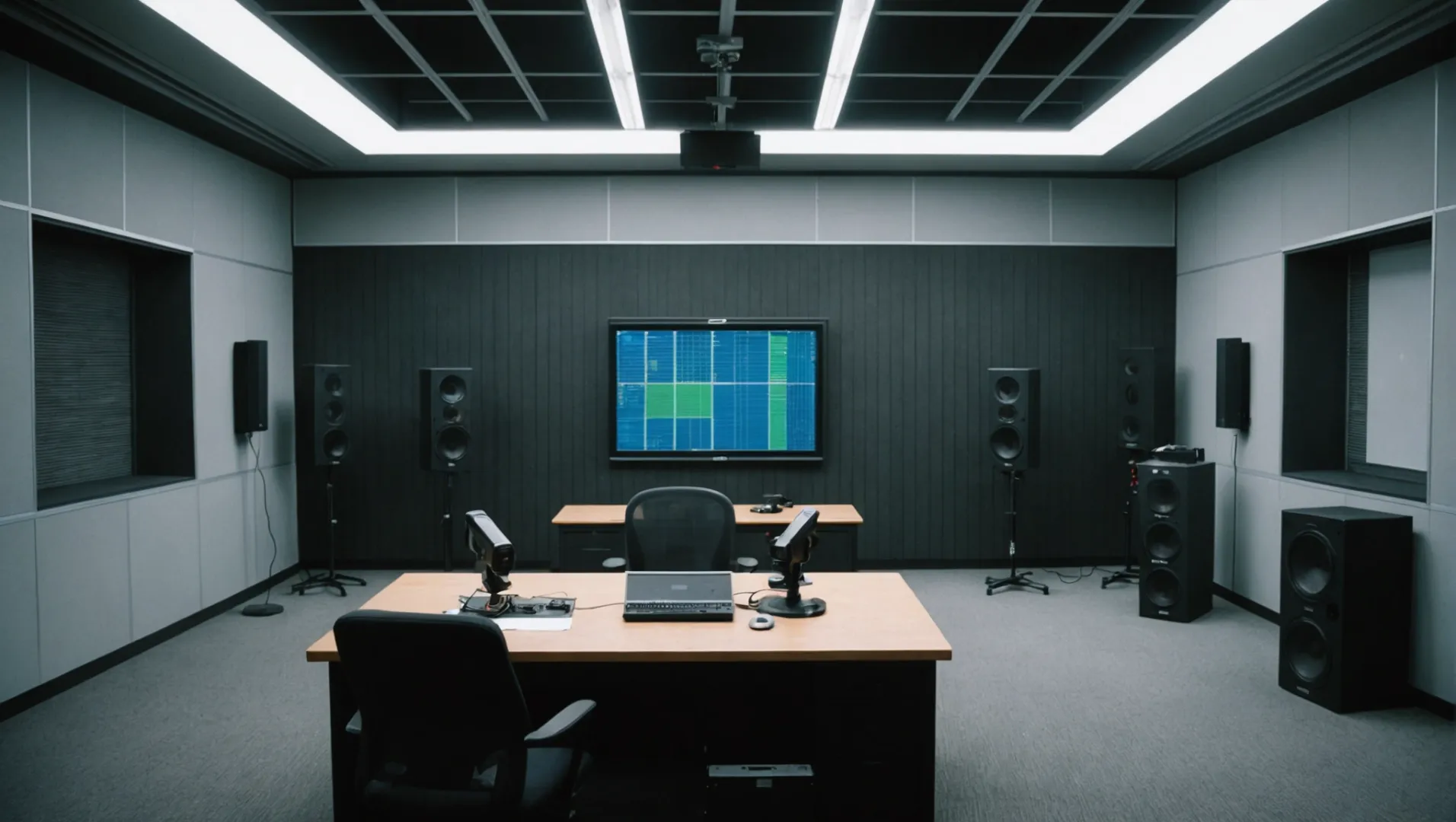
Garantir des mesures précises
Une salle d'essai acoustique professionnelle est essentielle pour obtenir des résultats précis et cohérents lors de la mesure des niveaux sonores des purificateurs d'air. Sans un tel environnement contrôlé, les bruits extérieurs peuvent facilement fausser les résultats, ce qui conduit à des évaluations inexactes qui ne reflètent pas vraiment les performances du purificateur d'air. En isolant l'appareil dans une pièce spécialisée, les testeurs peuvent se concentrer uniquement sur les sons produits par le purificateur d'air lui-même.
Distinction entre la pression acoustique et la puissance acoustique
Dans le domaine des essais de bruit, il est essentiel de faire la différence entre la pression acoustique et la puissance acoustique. La pression acoustique, souvent utilisée sur les marchés grand public, représente le niveau sonore audible en un point donné et peut varier en fonction de l'environnement. À l'inverse, la puissance acoustique quantifie l'énergie acoustique totale émise par l'appareil, offrant ainsi une mesure plus précise, privilégiée dans les environnements commerciaux.
Une salle d'essai acoustique professionnelle permet de mesurer avec précision la pression et la puissance acoustiques en offrant un environnement stable et exempt d'influences extérieures. Cette clarté est particulièrement importante lors de la conception de purificateurs d'air très performants et peu bruyants.
Équilibrer les performances et les niveaux de bruit
Les purificateurs d'air doivent concilier un fonctionnement efficace et des niveaux sonores acceptables. Un environnement d'essai professionnel permet aux fabricants d'évaluer rigoureusement cet équilibre en employant des techniques telles que essais multipoints6. Il s'agit de prendre des mesures sous différents angles autour de l'appareil, tels que l'avant, l'arrière, les côtés et le dessus, généralement à une distance d'un mètre. Ces tests complets permettent de contrôler les niveaux de bruit sans compromettre les performances du purificateur.
Normes et conformité de l'industrie
Le respect des normes industrielles est une autre raison pour laquelle une salle d'essai acoustique professionnelle est indispensable. Les normes telles que celles de l'AHAM (Association of Home Appliance Manufacturers) guident les procédures d'essai afin de garantir la cohérence des produits. Ces normes précisent comment et où les mesures doivent être prises. Il est donc essentiel pour les fabricants d'avoir accès à des installations capables de répondre à ces exigences rigoureuses.
En résumé, une salle d'essai acoustique professionnelle ne sert pas seulement à obtenir de faibles décibels ; elle permet de s'assurer que les purificateurs d'air offrent les meilleures performances tout en maintenant le confort de l'utilisateur grâce à des niveaux de bruit acceptables. Cet équilibre est essentiel sur le marché concurrentiel actuel où les consommateurs exigent à la fois un fonctionnement silencieux et une purification efficace de l'air.
Les salles d'essai de bruit professionnelles réduisent les interférences sonores externes.Vrai
Ces salles sont conçues pour minimiser le bruit ambiant, ce qui garantit des mesures précises.
La pression acoustique et la puissance acoustique sont identiques dans les tests de bruit.Faux
La pression acoustique varie en fonction de l'environnement ; la puissance acoustique mesure l'énergie acoustique totale.
Comment équilibrer les performances et le bruit des purificateurs d'air ?
Il est essentiel d'équilibrer les performances et le bruit des purificateurs d'air pour assurer un fonctionnement optimal sans perturbation.
Pour équilibrer les performances et le bruit des purificateurs d'air, testez les niveaux de bruit en mesurant la puissance acoustique, en tenant compte de la vitesse du ventilateur et en utilisant des technologies de pointe pour un fonctionnement plus silencieux.

Comprendre le compromis entre performance et bruit
Les purificateurs d'air fonctionnent en faisant circuler l'air à travers des filtres pour éliminer les polluants. L'efficacité de ce processus dépend largement de la vitesse du ventilateur et du type de système de filtration utilisé. En général, une vitesse de ventilation plus élevée améliore les performances de purification de l'air, mais augmente également les niveaux de bruit. Il est donc nécessaire de procéder à des ajustements stratégiques pour parvenir à un équilibre.
Le rôle de la vitesse du ventilateur et de la technologie
Les fabricants intègrent souvent des commandes de vitesse variable, permettant aux utilisateurs de régler la vitesse du ventilateur en fonction de leurs besoins. Les réglages à haute performance peuvent convenir en cas de pic de pollution, mais ils peuvent être bruyants. À l'inverse, un réglage plus bas peut suffire pour une utilisation nocturne, lorsqu'un fonctionnement silencieux est préférable.
Les progrès technologiques récents ont permis de mettre au point des ventilateurs et des moteurs plus efficaces qui produisent moins de bruit sans compromettre les performances. Des technologies telles que Systèmes de filtration HEPA7 et les filtres à charbon actif sont conçus pour maximiser la purification de l'air tout en minimisant les émissions acoustiques.
Utilisation des mesures de puissance acoustique pour la lutte contre le bruit
Les mesures du niveau de puissance acoustique sont généralement plus précises que les niveaux de pression acoustique, en particulier dans les environnements commerciaux et industriels. Cette approche consiste à évaluer le son émis par le purificateur lui-même plutôt que le son perçu par l'oreille humaine, qui peut varier en fonction de facteurs environnementaux.
Un test de bruit complet doit comprendre des mesures en plusieurs points autour du purificateur d'air - à l'avant, à l'arrière, sur les côtés et sur le dessus - généralement à une distance standard d'un mètre. Cela permet d'obtenir une image plus claire du profil sonore dans les différents modes de fonctionnement.
| Type de mesure | Description | Application |
|---|---|---|
| Puissance sonore | Énergie acoustique totale émise | Préférence pour la conception et l'ingénierie |
| Pression acoustique | Niveau de bruit perçu par les humains | Fréquent dans les évaluations des consommateurs |
Mise en œuvre des innovations en matière de conception
L'intégration de caractéristiques de conception telles que des boîtiers isolés, des matériaux insonorisants et des pales de ventilateur aérodynamiques peut contribuer à la réduction du bruit. Certains modèles avancés sont équipés de capteurs intelligents qui ajustent automatiquement la vitesse du ventilateur en fonction de la qualité de l'air, ce qui permet de maintenir un équilibre entre les performances et le fonctionnement silencieux.
En se concentrant sur ces éléments, les fabricants peuvent créer des purificateurs d'air qui répondent à la fois à des normes de performance élevées et à des attentes en matière de faible niveau sonore, offrant ainsi aux consommateurs le meilleur des deux mondes.
Des vitesses de ventilateur plus élevées augmentent le bruit du purificateur d'air.Vrai
L'augmentation de la vitesse du ventilateur améliore la purification de l'air mais augmente le niveau de bruit.
Les filtres HEPA réduisent le bruit des purificateurs d'air.Faux
Les filtres HEPA améliorent la purification mais ne réduisent pas directement le bruit.
Conclusion
La compréhension des tests de bruit peut vous guider vers le purificateur d'air idéal, en équilibrant l'efficacité et la tranquillité.
-
Découvrez des listes complètes d'outils indispensables pour effectuer des tests de bruit précis.. : L'évaluation du niveau de bruit produit par un purificateur d'air est cruciale. Nous utilisons un outil spécialisé pour mesurer les niveaux de bruit sur l'échelle dBA et testons chaque purificateur d'air ... ↩
-
Découvrez les principales différences entre la pression acoustique et la puissance acoustique.. : Dans le cas d'un niveau de puissance acoustique, la valeur de référence est de 10-12 Watts alors que la valeur de référence pour le niveau de pression acoustique est de 2.10-5 pascals. ↩
-
Découvrez l'impact des niveaux de pression acoustique sur les expériences auditives.. : Le niveau de pression acoustique (SPL) est le niveau de pression d'un son, mesuré en décibels (dB). Il est égal à 20 x le Log10 du rapport de la racine ... ↩
-
Comprendre l'importance de la puissance acoustique dans la conception des produits.. : Le bruit industriel - également connu sous le nom de pollution sonore industrielle - fait référence au son indésirable ou excessif produit par les activités et les processus industriels. ↩
-
Découvrez l'influence du niveau de pression acoustique sur les perceptions des consommateurs.. : Ce classement PNR aidera les consommateurs à mieux comprendre et comparer le bruit des produits qu'ils pourraient vouloir acheter. ↩
-
Découvrez pourquoi les tests multipoints garantissent une évaluation complète du niveau de bruit.. : Pour tester le filtre à air DIY, j'ai décidé de cuisiner le même repas quatre fois et de faire tourner le ventilateur à plein régime pour deux des tests. ↩
-
Découvrez comment les systèmes HEPA équilibrent l'efficacité de la purification et la réduction du bruit : HEPA est un type de filtre à air mécanique plissé. Il s'agit d'un acronyme pour [filtre] à particules de haute efficacité (tel que défini officiellement par le département américain de l'énergie ... ↩


